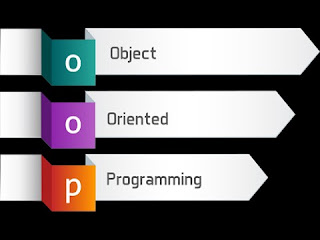Object Oriented Programming
You can check this free course in udemy
Introduction to the Object-oriented Approach
In order to survive, businesses need to incorporate complex and interrelated processes in their working. Due to this complexity and inter dependency among processes, the code written to implement the processes becomes complex and difficult to manage. In order to reduce this complexity and improve maintenance, you can use a programming paradigm that can be easily handled. Object-oriented Programming (OOP) is one such approach.
This chapter introduces the object-oriented methodology and discusses the concepts of objects, classes, messages, and methods. The chapter also explains the advantages of object orientation.
Objectives
In this chapter, you will learn to:
-Identify the object-oriented methodology
-Identify the advantages of object orientation
Overview of Object-oriented Methodology
In today's competitive world, it is important to develop simple and speedy solutions that can be applied instantly to varied requirements. This has resulted in the creation of different, and sometimes, complex software systems. Though complexity of a software system cannot be avoided altogether, there are ways to ensure that this complexity does not become a stumbling block to the smooth functioning of the software. One way of reducing the complexity is to use the concept of object orientation.
Defining Object Orientation
Object orientation is a software development methodology that is based on modeling a real-world system. An object is the core concept involved in object orientation. It is the representation of a real-world entity or concept. For Example, an employee, a window, a car, or a bird can be modeled as objects. An Object-oriented (OO) model can be considered as a collection of objects and their inter-relationship.
Introduction to the Object-oriented Approach
In order to survive, businesses need to incorporate complex and interrelated processes in their working. Due to this complexity and inter dependency among processes, the code written to implement the processes becomes complex and difficult to manage. In order to reduce this complexity and improve maintenance, you can use a programming paradigm that can be easily handled. Object-oriented Programming (OOP) is one such approach.
This chapter introduces the object-oriented methodology and discusses the concepts of objects, classes, messages, and methods. The chapter also explains the advantages of object orientation.
Objectives
In this chapter, you will learn to:
-Identify the object-oriented methodology
-Identify the advantages of object orientation
Overview of Object-oriented Methodology
In today's competitive world, it is important to develop simple and speedy solutions that can be applied instantly to varied requirements. This has resulted in the creation of different, and sometimes, complex software systems. Though complexity of a software system cannot be avoided altogether, there are ways to ensure that this complexity does not become a stumbling block to the smooth functioning of the software. One way of reducing the complexity is to use the concept of object orientation.
Defining Object Orientation
Object orientation is a software development methodology that is based on modeling a real-world system. An object is the core concept involved in object orientation. It is the representation of a real-world entity or concept. For Example, an employee, a window, a car, or a bird can be modeled as objects. An Object-oriented (OO) model can be considered as a collection of objects and their inter-relationship.


Comments
Post a Comment